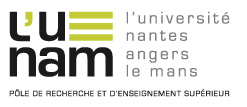Use of immunofluorescence for detection of Phoma exigua var. foveata, the cause of potato gangrene.
Application de l'immunofluorescence a la detection de Phoma exigua var. foveata, agent de la gangrene de la pomme de terre
Résumé
An antiserum against Phoma exigua var. foveata was prepared using pycniospores of the fungus produced in pure culture. The indirect fluorescence antibody technique of NAIRN (1964) was used. The serum had an estimated titre of 1/4000, by immunofluorescence, and was specific for the spores of the variety foveata ; it could be used to differentiate between the varieties P. exigua var. exigua and P. exigua var. foveata, the latter variety being mainly responsible for potato gangrene. No immunofluorescence reaction was noted with other species of Phoma. A comparative study was carried out with the two varieties using immunofluorescence and the classical identification techniques of isolation on agar media after wound inoculation of tubers. A good correlation was obtained between the two identification techniques. Eight samples were positive in I.F. and seven with the isolation technique. Three to five spores were observed in each field of the microscope at magnification 500. Therefore the application of I.F. for the identification of this fungus appears to be useful and feasible.
Un antisérum a été obtenu à partir des pycniospores de Phoma exigua var. foveata provenant d’une souche pure cultivée in vitro ; son titre, estimé en immunofluorescence, est de 1/4000e. La technique d’immunofluorescence (I.F.) indirecte de NAIRN (1964) a été utilisée. Le sérum réagit spécifiquement avec la variété foveata et seulement avec les spores de cette variété. Il ne révèle ni le mycélium de cette variété, ni la forme voisine, P. exigua var exigua; il permet donc de différencier les deux formes lorsqu’il s’agit de spores. De même, aucune réaction n’a été observée en I.F. avec d’autres espèces appartenant ou non au genre Phoma (tabl. 1). La recherche de la variété foveata, principal agent responsable de la gangrène de la pomme de terre a été réalisée sur tubercules de façon simultanée par I.F. et par la technique classique d’isolement sur milieu gélosé après blessure des tubercules ; les deux méthodes donnent des résultats très voisins puisque 8 lots sont positifs en I.F. contre 7 par la technique d’isolement. Chaque préparation provenant d’un lot infecté présentait en moyenne 3 à 5 spores par champ du microscope au grandissement 500. L’application de l’I.F à la détection de ce champignon sur pomme de terre paraît donc envisageable.
Domaines
Sciences agricoles
Origine : Fichiers éditeurs autorisés sur une archive ouverte
Loading...

